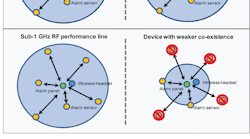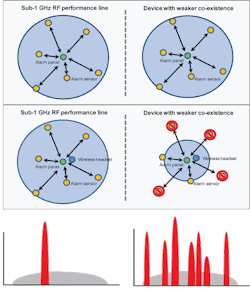For many applications, such as remote deployments, long-range, reliable communications capability is critical. As these long-range applications begin to demand even greater data throughput from their communication links, conflicting performance requirements are starting to arise. Broad bandwidth techniques could easily enable the greater data capacities being demanded. Yet doubts arise over whether such broadband methods can cope with the environmental and electromagnetic hazards that are typical in these applications. In the white paper, “Long-Range RF Communication: Why Narrowband Is the de facto Standard,” Texas Instruments delves into this topic and the surrounding issues.
When implementing a long-range RF communications system, power, reliability, interference, and cost can all be major concerns. For example, look at the debate between narrowband systems and broadband techniques, such as coding-gain methods. Those concerns are actually the deciding parameters when implementing long-range deployments. Because power often scales with bandwidth, interference, and throughput, the battery lifetimes of many of these systems limit the compatible technologies.
To demonstrate the comparison between narrowband and coding-gain techniques, the noise floor at several receive bandwidths is analyzed in the white paper. Here, a 10× increase in the receive bandwidth equates to an increase of 10 dB in the noise floor (or a need for an additional 10 dB of coding gain). If the increase in coding gain does not reduce the net data rate, the receive bandwidth will have to be further increased to accommodate the signal.
For public-safety and business-industrial land-mobile-radio (LMR) systems, it should be noted that Federal Communications Commission (FCC) regulations restrict the signal’s bandwidth to 12.5-kHz channels. Coexistence protection also is limited when using coding-gain schemes, as any interference beyond that marginal threshold will impede signal integrity. A practical narrowband system, for example, could reap up to 65 dB isolation from adjacent channels—potentially increasing robustness and battery life in multiple-radio deployments.
Texas Instruments, 12500 TI Blvd., Dallas, TX 75243; (972) 995-2011

